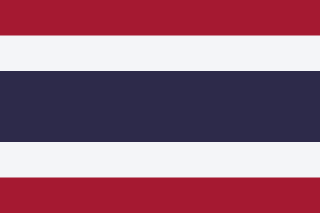Thailand - Geography

Here, let us take a look at the Geography of Thailand. Controls only land route from Asia to Malaysia and Singapore. Mother's mean age at first birth is 23.3 years (2009 est.) (), whereas, the Maternal mortality ratio is 34 deaths/100,000 live births (2023 est.)
Geographical data of Thailand
| Location | Southeastern Asia, bordering the Andaman Sea and the Gulf of Thailand, southeast of Burma |
|---|---|
| Geographic coordinates | 15 00 N, 100 00 E |
| Map references | Southeast Asia |
| Tarrain | central plain; Khorat Plateau in the east; mountains elsewhere |
| Natural Resources | tin, rubber, natural gas, tungsten, tantalum, timber, lead, fish, gypsum, lignite, fluorite, arable land |
| Natural Hazards | land subsidence in Bangkok area resulting from the depletion of the water table; droughts |
| Irrigated Land | 64,150 sq km (2012) |
| Major rivers (by length in km) | Mae Nam Khong (Mekong) (shared with China [s], Burma, Laos, Cambodia, and Vietnam [m]) - 4,350 km; Salween (shared with China [s] and Burma [m]) - 3,060 km; Mun - 1,162 km note: [s] after country name indicates river source; [m] after country name indicates river mouth |
| Major aquifers | |
| Land Boundaries | 5,673 km |
| Border Countries | Burma 2,416 km; Cambodia 817 km; Laos 1,845 km; Malaysia 595 km |
| Coastline | 3,219 km |
| Climate | tropical; rainy, warm, cloudy southwest monsoon (mid-May to September); dry, cool northeast monsoon (November to mid-March); southern isthmus always hot and humid |
| Area | |
| Total Area | |
| Land Area | 510,890 sq km |
| Water Area | 2,230 sq km |
| comparative Area | about three times the size of Florida; slightly more than twice the size of Wyoming |
| Maritime Claims | |
| Territorial sea | 12 nm |
| Exclusive economic zone | 200 nm |
| Continental shelf | 200-m depth or to the depth of exploitation |
| Elevations | |
| Highest point | Doi Inthanon 2,565 m |
| Lowest point | Gulf of Thailand 0 m |
| Mean elevation | 287 m |
| Land Use | |
| Agricultural land | 46% (2022 est.) |
| Agricultural land: arable land | arable land: 33.6% (2022 est.) |
| Agricultural land: permanent crops | permanent crops: 10.9% (2022 est.) |
| Agricultural land: permanent pasture | permanent pasture: 1.6% (2022 est.) |
| Forest | 38.8% (2022 est.) |
| Other | 15.2% (2022 est.) |
Population Distribution
Highest population density is found in and around Bangkok; significant population clusters throughout large parts of the country, particularly north and northeast of Bangkok and in the extreme southern region of the country
People and Society
In Thailand, the different Ethnic groups are such that we have: Thai 97.5%, Burmese 1.3%, other 1.1%, unspecified <0.1% (2015 est.)
| Population | |
|---|---|
| Pop growth rate | 0.17% (2024 est.) |
| Birth rate | 9.9 births/1,000 population (2024 est.) |
| Death rate | 8 deaths/1,000 population (2024 est.) |
| Health expenditure | |
| Physicians Density | |
| Hospital bed Density | 2.3 beds/1,000 population (2021 est.) |
| Total fertility rate | 1.54 children born/woman (2024 est.) |
| Gross reproduction rate | 0.75 (2024 est.) |
| Contraceptive prevalence rate | |
| Est married women (ages 15-49) | 60.8% (2023 est.) |
| Literacy | |
| Education expenditures | |
| Net Migration rate | -0.3 migrant(s)/1,000 population (2024 est.) |
| Nationality | Thai | Thai (singular and plural) |
| Languages | |
| Religions | Buddhist 92.5%, Muslim 5.4%, Christian 1.2%, other 0.9% (includes animist, Confucian, Hindu, Jewish, Sikh, and Taoist) (2021 est.) |
| Age Structure | |
| 0-14 years | 15.8% (male 5,669,592/female 5,394,398) |
| 15-64 years | 69% (male 23,681,528/female 24,597,535) |
| 65 years and over | 15.1% (2024 est.) (male 4,714,191/female 5,863,754) |
| Dependency Ratios | |
| Total dependency ratio | 44.8 (2024 est.) |
| Youth dependency ratio | 22.9 (2024 est.) |
| Elderly dependency ratio | 21.9 (2024 est.) |
| Potential support ratio | 4.6 (2024 est.) |
| Median Age | |
| Total | 41.5 years (2024 est.) |
| Male | 40.2 years |
| Female | 42.7 years |
| Urbanization | |
| Urban population | 53.6% of total population (2023) |
| Rate of urbanization | 1.43% annual rate of change (2020-25 est.) |
| Major urban areas (Pop) | 11.070 million BANGKOK (capital), 1.454 Chon Buri, 1.359 million Samut Prakan, 1.213 million Chiang Mai, 1.005 million Songkla, 1.001 million Nothaburi (2023). |
| Sex Ratio | |
| At birth | 1.05 male(s)/female |
| 0-14 years | 1.05 male(s)/female |
| 15-64 years | 0.96 male(s)/female |
| 65 years and over | 0.8 male(s)/female |
| Total population | 0.95 male(s)/female (2024 est.) |
| Infant Motality | |
| Total | 6.3 deaths/1,000 live births (2024 est.) |
| Male | 6.9 deaths/1,000 live births |
| Female | 5.6 deaths/1,000 live births |
| Life Expectancy at birth | |
| Total population | 78.2 years (2024 est.) |
| Male | 75.2 years |
| Female | 81.3 years |
| Drinking Water Sources | |
| Improved: urban | urban: 100% of population (2022 est.) |
| Improved: rural | rural: 100% of population (2022 est.) |
| Improved: total | total: 100% of population (2022 est.) |
| Unimproved: urban | urban: 0% of population (2022 est.) |
| Unimproved: rural | rural: 0% of population (2022 est.) |
| Unimproved: total | total: 0% of population (2022 est.) |
| Sanitation facility acess | |
| Improved: urban | urban: 99.9% of population (2022 est.) |
| Improved: rural | rural: 100% of population (2022 est.) |
| Improved: total | total: 100% of population (2022 est.) |
| Unimproved: urban | urban: 0.1% of population (2022 est.) |
| Unimproved: rural | rural: 0% of population (2022 est.) |
| Unimproved: total | total: 0% of population (2022 est.) |
| Alcohol consumption per capita | |
| Total | 6.86 liters of pure alcohol (2019 est.) |
| Beer | 1.85 liters of pure alcohol (2019 est.) |
| Wine | 0.23 liters of pure alcohol (2019 est.) |
| Spirits | 4.78 liters of pure alcohol (2019 est.) |
| Other alcohols | 0 liters of pure alcohol (2019 est.) |
| Tobacco use | |
| Total | 18.1% (2025 est.) |
| Male | 36.1% (2025 est.) |
| Female | 1.6% (2025 est.) |
| Child marriage | |
| Women married by age 15 | 5.5% (2022) |
| Women married by age 18 | 17% (2022) |
| Men married by age 18 | 5.8% (2022) |
Demographic profile
All Important Facts about Thailand
Want to know more about Thailand? Check all different factbooks for Thailand below.









